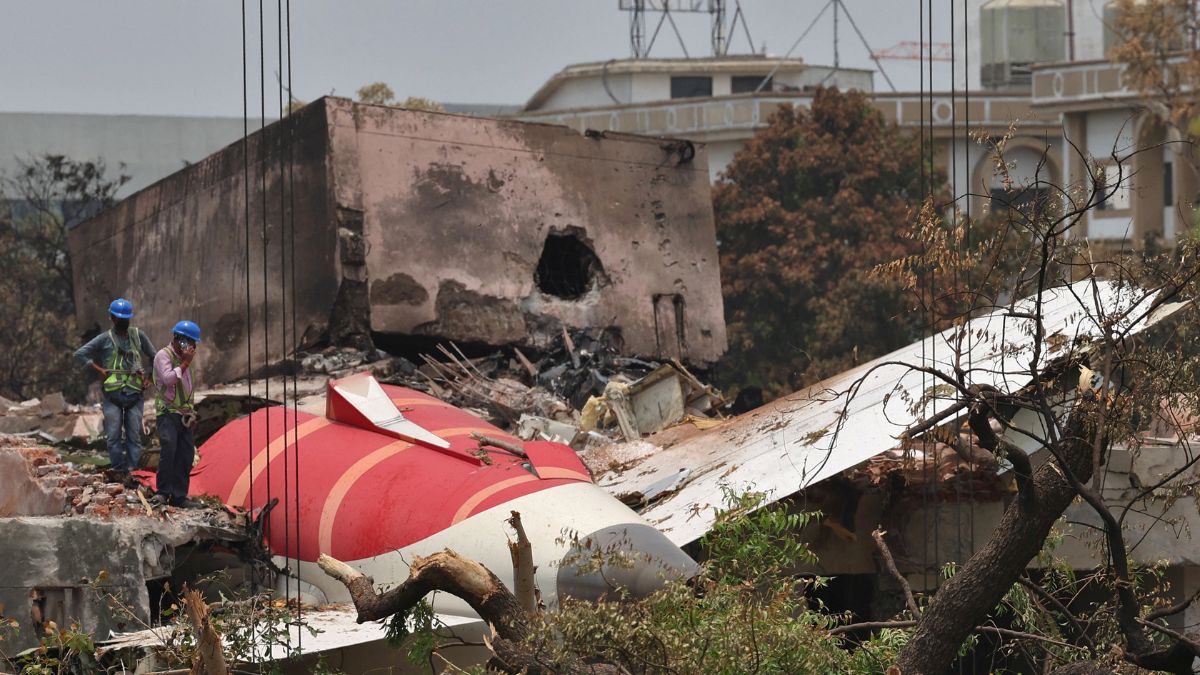The Air India AI-171 flight crash has sparked questions about the cause of the disaster that killed more than 200. On June 12, the London-bound Air India plane crashed into a residential area in Ahmedabad, moments after take-off.
At least 270 people died, of whom 241 were passengers and crew of the ill-fated Boeing 787-8 Dreamliner. Several theories have emerged about the factor(s) behind the crash. Now, some are claiming that the Ram Air Turbine (RAT) was activated shortly after the Air India flight took off from Ahmedabad.
What is it? And what does its activation mean? We will explain.
What is RAT?
Ram Air Turbine (RAT) is an emergency power source for an aircraft when the main engines fail to generate power for essential systems.
The small propeller-like device uses wind speed to generate emergency power.
It is deployed automatically when the flight experiences dual engine failure, the loss of total electrical power or hydraulic failure.
The emergency back-up turbine can also be activated manually through a switch or lever in the cockpit.
After a power loss is detected, the RAT, located behind the landing gear console that deploys into the airstream, gets activated automatically. It generates power based on the speed of the aircraft.
Once deployed, the RAT powers key systems, such as flight controls or flight-critical instrumentation, navigation and communication equipment, according to SKYbrary.
ALSO READ: How is the Air India investigation unfolding? Why are UK, US involved?
Was RAT deployed in doomed Air India plane?
The Air India plane was airborne for 30 seconds before it came crashing down on a doctors’ accommodation building at the BJ Medical College and Civil Hospital last week.
Captain Sumeet Sabharwal, the pilot of the Air India flight, issued a mayday call to air traffic controllers in Ahmedabad almost immediately after takeoff.
A clearer video of the last moments of the plane purportedly indicates that the RAT was activated. The footage captured by Class 12 student Aryan Asari appears to show that the emergency back-up turbine was down.
Aviation experts cite the testimony of the sole survivor of the Air India plane crash to support this claim.
Vishwash Kumar Ramesh, a British national, had told the media that it felt the aircraft got stuck midair within moments of takeoff. He said he heard a “loud bang” and the light went out. Then a green light flashed and the plane accelerated but could not gain altitude.
A video of the Air India flight crash shows the AI-171 plane flying low over residential areas before rapidly descending and disappearing behind trees and buildings, before a huge explosion erupts in the sky.
Captain Steve Scheibner, who is reportedly a former US Navy pilot, has claimed that the RAT was deployed on the doomed Air India flight.
In a video on YouTube, he said, “In the middle of the circle, you see kind of a protrusion on the belly of the aircraft… just underneath that you see a little grey dot… that little grey dot is the RAT.”
Analysing the video of the Air India flight crash, Scheibner pointed to the “high-pitched squeal” to support his claim of the RAT deployment. He said the lone survivor’s statement signals what occurs during the RAT deployment.
The aviation expert’s new video comes after Scheibner previously claimed that pilots’ failure to set the wing flaps properly could be a possible reason for the crash.
A regulatory source told Indian Express that the loud bang that the sole survivor heard could mean a lower hatch gave way and the RAT was deployed automatically. However, the person said there could be other reasons for the loud sound.
What does it mean?
If the RAT was deployed, it is likely that the Air India flight faced a dual engine failure, aviation expert Captain Sahil Bhalla told Financial Express.
Bhalla said that the RAT is deployed within seconds of engine failure, which means the aircraft has lost power from both engines. “The activation of the RAT is almost instantaneous. It tells us that the aircraft was relying on emergency backup systems due to a significant loss of power," he said.
The RAT is the last resort to power the aircraft when everything stops working. However, it is more useful when the plane is at higher or cruising altitudes, providing ample time for pilots to land at the closest airfield.
This was not the case with the Air India flight, which was at an altitude of just 625 feet before crashing.
With inputs from agencies
)